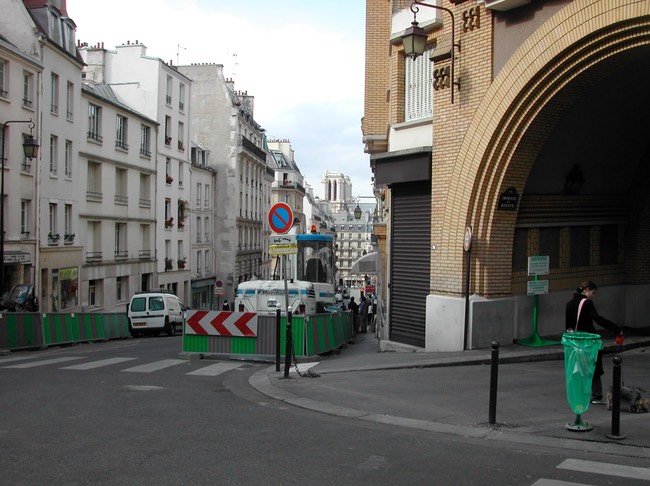Our week in Paris was spent in a neighbourhood remarkable for its lack of tourists, yet only steps away from some of the most visited sites in the city. The famous Latin Quarter of the fifth arrondissement lies on the slopes of the hill capped by the domed Pantheon, and includes the busy rue Saint-Germain, lined with well-populated cafés and restaurants. At the bottom of the hill are the bridges of the Seine and the spires of Notre-Dame Cathedral. Within fifteen minutes walk are the Luxembourg Garden, the nightlife of the Boulevard Saint-Michel, and the famous cafés of the sixth arrondissement.
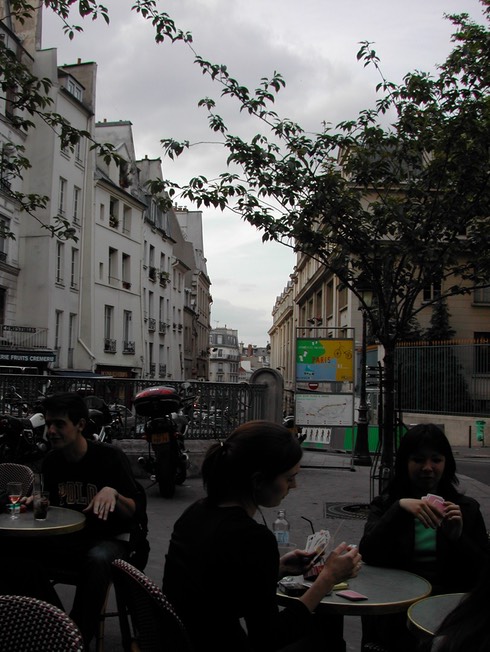
And yet, we returned each day from our travels around the city to a home-like oasis, bustling in a remarkably quotidien way. Our little apartment was in an ancient, well-fortified stone building on a quiet street halfway between Notre-Dame and the Pantheon. Around the corner was the busy rue Monge, a commercial artery that runs almost the length of the arrondissement. It was on this street that we began most days, at the amazing Maison Kayser, where we purchased delicious breakfasts of chewy baguettes and melt-in-your-mouth croissants.
At the end of our block, a tiny, unnamed square contained two cafes, an Irish pub, and a dimly-lit wine bar. The small, triangular place was surrounded by buildings five and six stories high, lined with tall windows and iron railings. At one corner was a small fountain, always surrounded by motorcycles, and the rest of the triangle was filled with small tables beneath awnings. It was here, after returning from our day’s activities, that we chose to take our ease with a pichet of house wine and an orangina for our son. Typically, the tables were arranged in close rows, with little space between us and the other patrons. We sat looking outward, listening to the buskers singing and playing their guitars a few feet away, talking, playing cards, sipping cool drinks. (My French is not adequate to Parisian arguments, but I would swear that the two men seated next to us upon one occasion were debating the subject of cooking!)
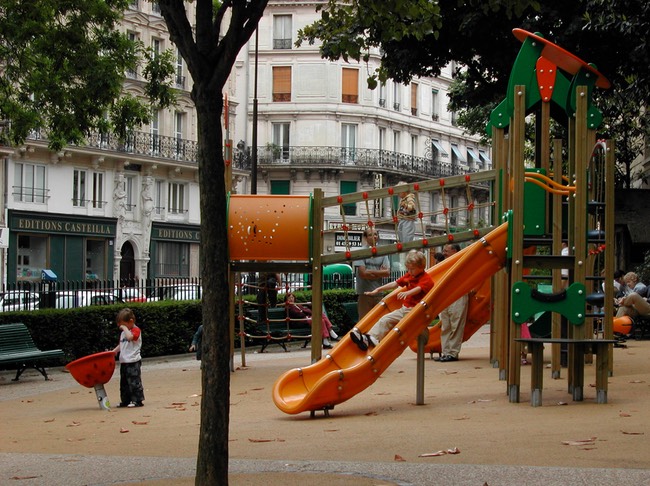
Afterward, we would seek out the places where the local families took their children to play before dinner. Nearby, a small playground at the corner of two busy streets was always crowded after four-thirty, and our son joined the Parisian children in their play. Or we might take a stroll through the Jardin des Plantes, the large park on the eastern edge of the Fifth which was far less crowded than its more famed cousin, the Luxembourg. It features botanical gardens and greenhouses, the Museum of Natural History, and a small zoo. The garden strolls are free, and there are play structures and a carousel.
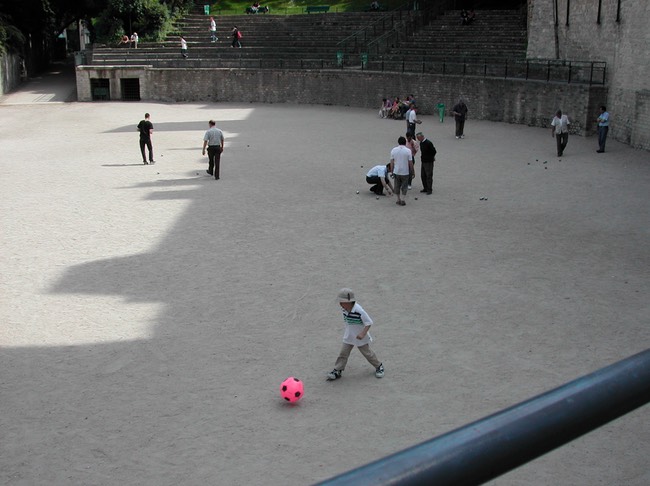
Some days we took a soccer ball to the Arènes de Lutèce, a hidden gem adjacent to the rue Monge. When we first walked through the portal of the sunken amphitheatre, late in the afternoon of a warm day, we found a group of young adults playing soccer in one corner, some younger children kicking a ball in another, and a group of men playing the quintessential game of boules. Above the amphitheatre, children ran and played among the trees. It was never crowded, and in all the time we spent there over several days, we saw one pair of tourists walk through. To me, it felt as if we had discovered, not an architectural treasure, but a secluded neighbourhood park, where the locals went with their children in the cool of the evening, and the boules players met for their daily tournament.
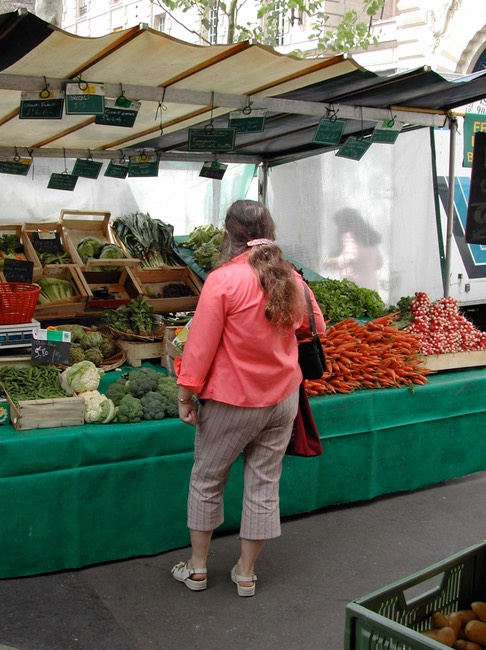
There were two markets within walking distance of our apartment, on alternating days. Three days a week, we could walk down the hill a few short blocks to the Place Maubert, where the featured fresh spring produce: fava beans, broccoli, strawberries, potatoes, and giant bunches of dark green spinach. Across the street was a wine shop, and a cremerie where we purchased cheese, butter, and cream. On alternate days, we traveled a little further, to the market at Place Monge, where we bought fresh fruit and greens, farm-fresh goat cheese, olives and nuts, and large purple bulbs of fragrant garlic. The Saturday market was the liveliest of all, when additional tables were jammed into the Place Maubert, filled with kitchen linens, housewares, and clothes. One booth sold scarves in multiple colours, folded into squares and lining the table, and hanging in great swathes from the awning.
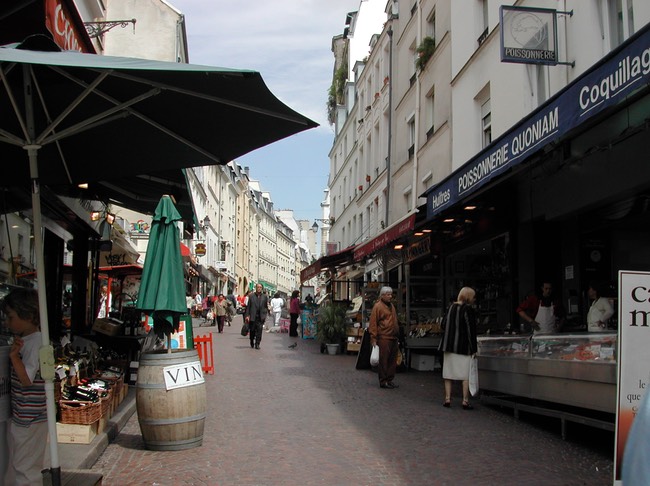
One of our favourite walks both in the daytime and evening was the charming rue Mouffetard, a narrow pedestrian street that winds its way down the other side of the hill, lined with a mixture of shops, restaurants, and food stores. Wine shops, fromageries, boulangeries, and shops selling crepes and grilled panini: we visited them all, delighting in the wonderful treats we could buy. The restaurants included Greek and Italian food, crêpes and panini, Alpine-style raclette, and traditional bistro fare.
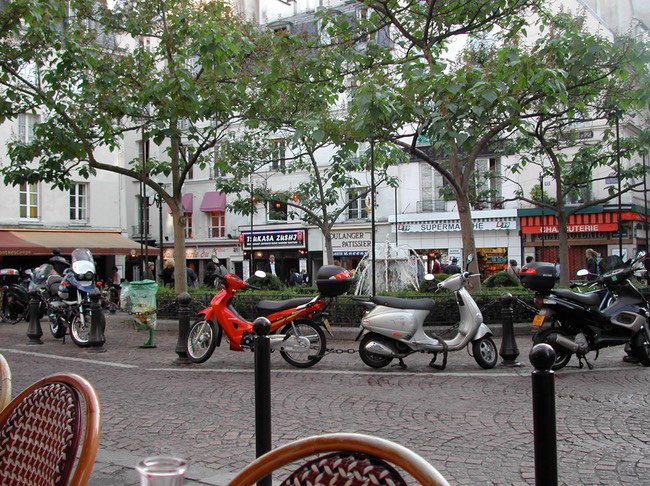
Halfway down the hill is the Place de la Contrescarpe, a delightful square surrounded by cafes and restaurants, and at its centre a fountain lined with the ubiquitous motorcycles. This square was lively whenever we passed through it, early in the day when people enjoyed their café and brioche, in the afternoon when patrons had sandwiches and beer or wine, and late into the evening when the fountain was lit and people came and went.
In our neighbourhood, in the very historic heart of left bank Paris, we never felt overwhelmed by the presence of other tourists, or that we were moving among crowds of foreigners. On the contrary, we felt a hint of the life that a native Parisian might experience, the day to day possibilities of the City of Light.
Photos: Looking down rue des Carmes toward Notre Dame, La Petite Café, playground on rue Monge, Arène de Lutèce, market at Place Monge, rue Mouffetard, Place de la Contrescarpe
